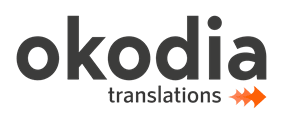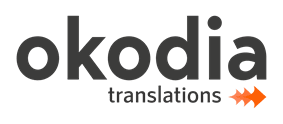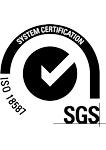They say that knowledge does not take up any room, but it is impossible to know everything. In almost every translation, the translator will come across something that they do not know, facing a different challenge to the one they faced the day before. And a little extra help never hurt anyone. That is why we want to tell you about a number of useful resources for translators that we believe will help you out in those moments of uncertainty. In this entry you will see:
- Essential dictionaries and glossaries when translating
- Useful guides for curious translators
- Computer-aided translation tools
- Forums: the meeting point
- Plugins and links that you will be glad you have discovered
Essential dictionaries and glossaries when translating
An article on useful resources for translators could only start with a list of dictionaries and glossaries to use when the typical linguistic questions arise.
Resource 1: Linguee
A true classic in our business sector. Linguee is a web environment that combines a dictionary with a search engine. In its own words “Linguee is the unique combination of a dictionary and a search engine you can use to access more than 100 million translations made by people and search for words and expressions in another language.” This creates an interesting linguistic corpus that should be used, professionally, in moderation.
Resource 2: IATE
IATE. This is one of the most consulted glossaries in the European Union. You may have heard professional translators talk about “Interactive terminology for Europe”. This is the one they are referring to. It is a basic linguistic reference.
Resource 3: Clave dictionary of current Spanish use
Most Spanish language students are aware of the size and importance of this classic. The timeless CLAVE dictionary has been updated for the computer age and offers students, teachers and professional translators a useful online dictionary.
Resource 4: Fundeu Style Manual
The style manual that over the years has become the one to be consulted if you have any doubts about linguistics, syntax or grammar in Spanish. In addition to quickly answering specific questions from users, this manual anticipates possible questions by publishing articles related to hot current topics.
Resource 5: Compilation of glossaries and dictionaries from the RITAP
RITAP, the Spanish Government’s Network of Interpreters and Translators, offers users a portal that while visually poor, is full of extremely useful resources for language learners, teachers, translators and interpreters. Glosarium is a complete search engine for dictionaries and glossaries in different languages and with a very broad theme. Recommendable.
Resource 6: Wikilengua
The well-known Wikipedia has a less famous but equally useful little sister: Wikilengua. This interesting collaborative project tells us in its welcome text “it is an open and participatory site for sharing practical information about the rules, use and style of Spanish and a way to reflect the diversity of a language spoken by hundreds of millions of people.” It also exists in other languages, with the same philosophy.
Useful guides for curious translators
Translators have to continually update their knowledge and training but they don’t always have time to sign up for a course or workshop. That is why we want to share some free links that can save you time and help you with your self-learning.
Resource 1: ebook on multilingual management of social media
Face-to-face communication is one thing but communication over social media is completely different. At the end of the day, we do not know our readers, we cannot see their gestures to judge whether we are making a mistake and the information that is published stays there forever. Because of this, we’d like to share this e-book on multilingual management of social media (for you to stay on top of things in Facebook, Twitter and the like), that can guide us on how to take advantage of the platform the social media has given us.
Resource 2: Guide to translating your blog
One could say that the social media and blogs are cousins. In the case of the latter, you have to pay particular attention to the marketing strategy that you’ll be using and keep an eye on positioning in the search engines. In these cases, languages are absolutely essential, and as we said in the Guide to Translating Your Blog, writing a post in your native language is not the same as doing it in another language. There are tips that will help you position yourself better.
Resource 3: Ebook about financial translations
Money. The root of almost all problems. And one of the greatest concerns of small and large companies alike (and freelancers as well). Managing a company sometimes entails doing some paperwork that will not always be in Spanish. Sometimes it’s necessary to carry out certain transactions in the US, Germany, France… and these documents have to be in the relevant language. Reading this e-book on financial translations will help you a little to become a better professional.
Resources 4 and 5: Don’t lose sight of tourism!
Spain is considered to be one of the most visited countries by tourists. It’s a shame that foreigners sometimes have to deal with huge mistakes in culinary translations. Would you like to improve? Well, here are some free templates for your tourism translations and an e-book to make a killing all year! Good luck!
CAT tools
The more widespread use of Computer Assisted Translation (CAT) tools has radically changed the way many translation professionals work. Thanks to translation memories, glossaries and matches, such tools can exponentially increase the productivity of translators. But of course, they don’t actually do the translation themselves. Nothing is that simple!
Resource 1: SDL Trados
Of the different SDL tools that we have tried at Okodia, we can highlight SDL Multiterm, a streamlined tool that allows you to create and maintain terminology glossaries.
Resource 2: Wordfast
Wordfast is the main competitor to SDL Trados and is even better than it in some of its solutions. One of the advantages of this CAT tool is its ease of use, its functionality on different platforms and the large number of video tutorials and user manuals.
Resource 3: memoQ
The use of memoQ is becoming popular due to its functionality and its interface. As well as being intuitive and aesthetically pleasing, it processes quickly and has practically the same options as SDL Trados, or at least the most important ones.
Forums: the meeting point
There is often a vague image of translators as people who work in a dark cave and emerge blinking into the sunlight every time they leave the house. However, that doesn’t mean that we are loners. Quite the contrary, we have our ways to ask each other questions and form friendships.
Resource 1: Proz
This is a virtual meeting point for translators to talk to each other, but also for customers and translators to connect. You can find projects, advice, courses and more and it is a good place to ask questions and learn from the posts of other translators.
Resource 2: Translators Café
In the same style as the better known Proz, TranslatorsCafé.com aims to be a virtual café, a meeting place for the international linguistic community where they can find “a bit of everything”, from questions and answers on specific topics to an interesting bulletin board where people can publish or look for job offers and collaboration opportunities.
In a similar way, translation associations help us to connect with each other.
Most translation agencies – Okodia included – belong to one or more professional associations in the sector. There are many and varied reasons for this: being kept abreast of legislative developments, staying in contact with other colleagues in the profession, accessing training material and information of interest, appearing on job boards, etc. There are also associations for specific fields (interpreters, proofreaders, medical translation, etc.), national associations and regional associations (Aragon, Catalonia, Valencia, etc). Depending on what you are looking for, you can join one or another. We recommend this post about different associations that can guide you in the search for the perfect one for you.
Plugins and links that you will be glad you have discovered
At first glance, plugins for browsers might not seem useful resources for translators or even non-translators, since it is not the most obvious option, but we guarantee that they are once you know more.
Resource 1: dictionaries in the browsers themselves
You should know that there are plugins that allow you to search for expressions in a host of dictionaries, such as MID (Mozilla Internet Dictionary), which can also be customised; or Dynamic Language Tools, from Google Chrome, which among other things, allows you to search dictionaries in different languages.
Resource 2: Signature generator
Having a personalised and complete email signature gives a professional image that can help persuade a client to choose our services. To create one, we recommend Hubspot’s signature generator, a free tool that allows you to add a photo, phone number and social media links without any unsightly marks.
Resource 3: I love pdf
Receiving a PDF in non-editable format can be a nightmare. In these cases you can use the page I love pdf, since most of the time you can convert the file into an editable Word document. It sometimes has problems recognising the characters, but it is still a very useful free resource. It also offers other options like combining pdfs, splitting them or rotating them.
Resource 4: Anydesk
Do you need to use your computer but don’t have it in front of you? With Anydesk, you can connect to a computer remotely in a safe and reliable way. It can get you out of a pretty tight spot without the need to install anything.
Did you already know about these resources? Are there any in particular that you would especially recommend?
Useful links related to Useful resources for translators
Ebooks to translate specialised texts













